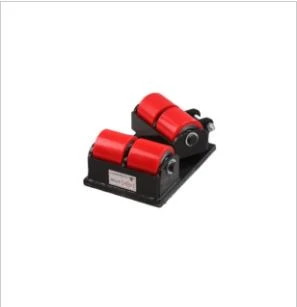Heavy Machinery Transport Solutions Using Advanced Moving Rollers for Efficient Operations
The Importance of Heavy Machine Moving Rollers in Modern Industry
In today's rapidly evolving industrial landscape, the need for efficiency and safety in moving heavy machinery has never been greater. Heavy machine moving rollers, often referred to simply as 'rollers' or 'moving dollies', play a crucial role in facilitating the safe and effective movement of large equipment within factories, construction sites, and warehouses. These rollers provide not only a means to transport heavy loads but also significantly reduce the risk of injury and damage, making them an indispensable tool in various sectors.
Heavy machinery, ranging from construction equipment like bulldozers and excavators to large industrial machines such as generators and compressors, can weigh several tons. Moving such substantial equipment without proper tools can lead to dangerous situations, including accidents that can result in injury to personnel or damage to property. This is where heavy machine moving rollers come into play. Designed to bear heavy loads, these rollers allow for smooth and controlled movement, thus enhancing workplace safety.
The design of heavy machine moving rollers typically incorporates a series of sturdy wheels mounted on a robust framework. This setup allows users to easily maneuver heavy equipment across flat surfaces. The wheels are often made of durable materials such as polyurethane or rubber, allowing them to support extreme weights while minimizing damage to flooring. Additionally, many rollers feature precision bearings which ensure that the movement is smooth and requires minimal effort.
One of the most significant advantages of using moving rollers is the increased efficiency they offer. In industries where time is money, the ability to quickly and safely reposition heavy machinery can drastically reduce downtime. For instance, in a manufacturing plant, being able to move large machines for maintenance or reconfiguration can streamline operations and improve productivity. Furthermore, rollers can be used to reposition equipment in tight spaces where traditional lifting methods would be impractical.
heavy machine moving rollers

In addition to efficiency and safety, moving rollers also help in preserving the integrity of the machinery being moved. Unlike forklifts or cranes, which can exert concentrated forces that might lead to structural damage, rollers distribute the weight evenly across multiple points. This gentle handling is particularly important for sensitive equipment that could be adversely affected by abrupt motions or heavy impacts.
While the benefits of heavy machine moving rollers are clear, it is vital for organizations to select the right type of roller for their specific needs. Factors such as load capacity, wheel type, and the terrain on which the roller will be used should all be considered. For example, heavy-duty rollers equipped with large wheels may be necessary for outdoor construction sites with uneven terrain, whereas lighter-duty models might suffice for indoor use on smooth floors.
Moreover, it is equally important for personnel using these rollers to undergo proper training. Understanding the weight limits, correct loading techniques, and the best practices for maneuvering can further enhance safety and efficiency. Employers should prioritize regular maintenance checks on the rollers themselves to ensure their functionality and extend their lifespan.
In summary, heavy machine moving rollers are an essential component of modern industrial operations. Their ability to facilitate the safe and efficient movement of heavy machinery minimizes risks, enhances productivity, and protects valuable equipment. As industries continue to grow and evolve, the reliance on these specialized tools will undoubtedly increase, making them a critical aspect of operational success in various sectors. Investing in high-quality moving rollers and training personnel accordingly is a step toward a safer, more efficient future in heavy machinery handling.
-
Portable 2000 lb Gantry Crane | Heavy-Duty & AdjustableNewsAug.30,2025
-
Versatile Lifting Solutions with Gantry and Overhead CranesNewsAug.29,2025
-
The Versatile Mobile Gantry Crane SolutionNewsAug.29,2025
-
Reliable Movement with Heavy Machinery Skates and RollersNewsAug.29,2025
-
Reliable Lifting Performance with 2000 lb Gantry Crane and 2 Ton Overhead SystemsNewsAug.29,2025
-
Maximize Lifting Efficiency with PML Magnetic LiftersNewsAug.29,2025
-
Efficient Relocation Starts with Reliable Machinery MoversNewsAug.29,2025
